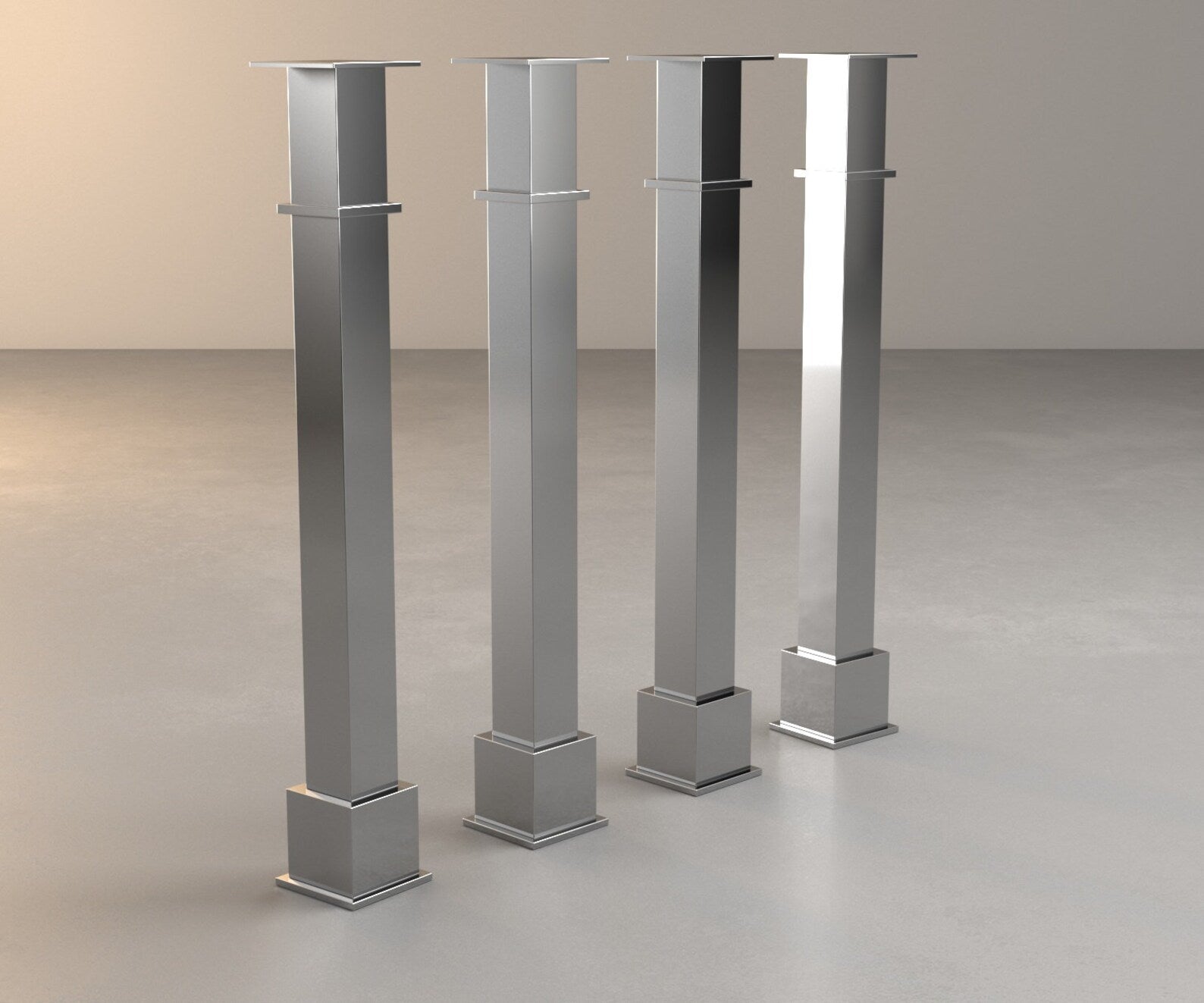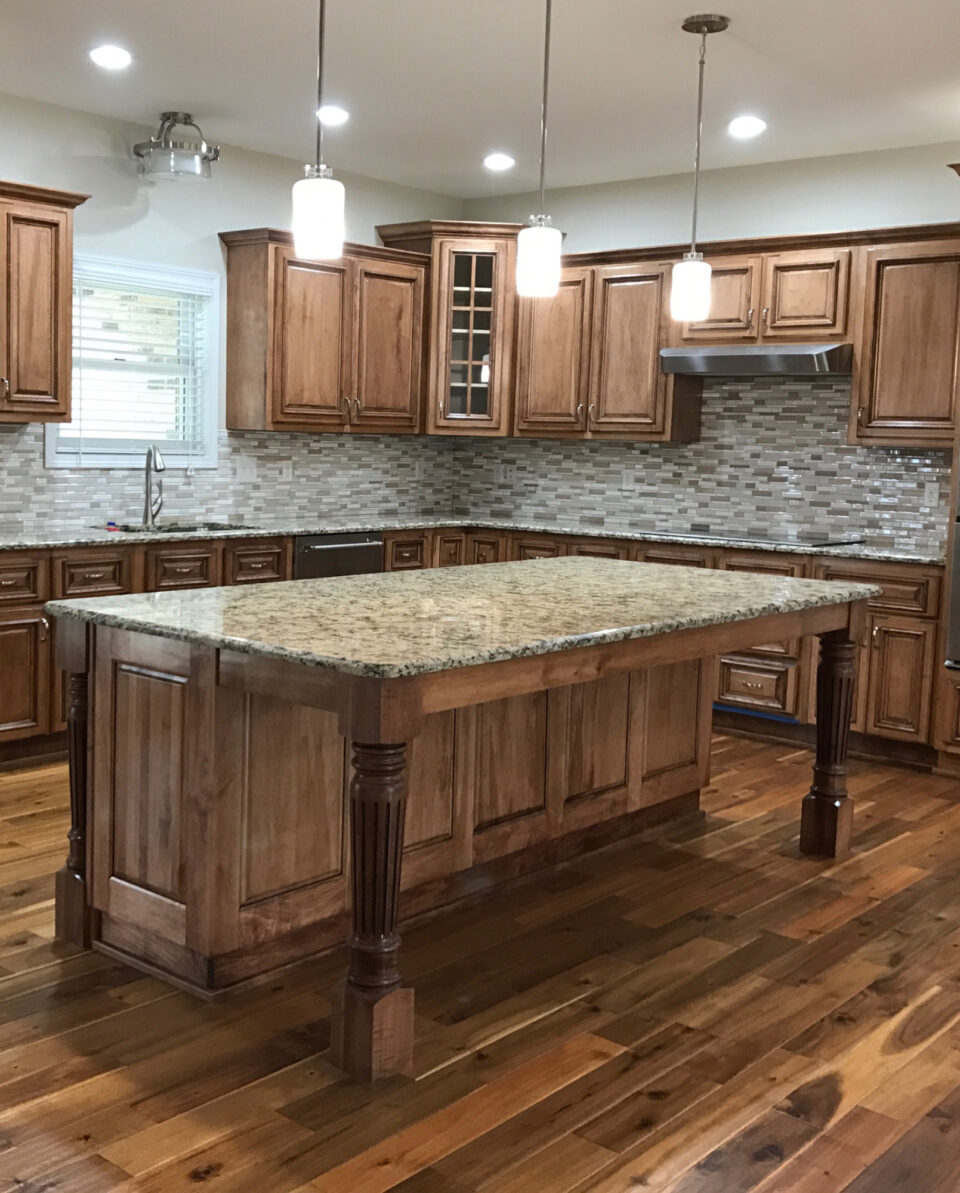Selecting the Perfect Kitchen Island Leg for Toughness and Functionality
Selecting the Perfect Kitchen Island Leg for Toughness and Functionality
Blog Article
Discovering the Crucial Attributes of a Kitchen Island Leg for Your Culinary Room
The cooking area island functions as a main center in any culinary space, and the option of leg layout is critical in enhancing both its functionality and aesthetic allure. Comprehending the important features of kitchen island legs-- consisting of material options, design styles, and stability elements-- can substantially impact the general experience within the kitchen area. As we discover these components, we will discover exactly how thoughtful modification and devices can boost your cooking area island from a simple utility to a striking focal point. What particular considerations should be focused on to attain this equilibrium?
Relevance of Kitchen Island Legs
Kitchen island legs play a vital duty in both the performance and aesthetic appeals of a kitchen area space. They not only sustain the weight of the island but likewise enhance the overall style, adding to the kitchen's visual charm. The choice of legs can dictate the style of the cooking area, be it contemporary, standard, or rustic.
Functionally, robust and appropriately designed legs ensure stability, enabling the risk-free use of the island for various jobs such as food prep work, eating, or amusing. Solid legs avoid moving and wobbling, offering a trusted surface area for everyday activities.
Moreover, the elevation and positioning of the legs can influence the comfort level for those seated at the island. A well-considered elevation can accommodate bar stools or chairs, advertising a welcoming setting for gatherings.
In addition to these useful factors to consider, kitchen island legs can act as a prime focus in the area (kitchen island leg). Ornamental or distinctly made legs can elevate the design aesthetic, making the island a centerpiece. Therefore, selecting the appropriate cooking area island legs is essential for balancing form and feature in any cooking space
Product Options for Legs
Selecting the appropriate product for cooking area island legs dramatically affects both sturdiness and style. Typical material choices include metal, stone, and wood, each offering distinctive advantages.
Timber is a preferred selection due to its warmth and versatility. It can be quickly customized to match numerous style designs, from rustic to contemporary. Woods like oak and maple offer exceptional strength and long life, while softer timbers can be much more vulnerable to tear and use.
Metal legs are preferred for their sleek, contemporary aesthetic. kitchen island leg. Stainless-steel and light weight aluminum are not only robust however also immune to rust and deterioration, making them ideal for kitchen settings. They can develop an industrial appearance and are typically offered in different coatings to enhance various other kitchen area elements
Stone legs, such as granite or marble, include an element of luxury and security. While heavier than other materials, they use phenomenal durability and can stand up to considerable weight. They might need extra support to ensure appropriate balance.
Eventually, the option of material should align with both useful needs and the total layout vision of the kitchen area area, guaranteeing that the island legs boost both utility and looks.
Style Designs to Take Into Consideration
What design styles should be thought about when picking legs for a cooking area island? The selection of leg design significantly influences the overall visual of your cooking area. For a modern kitchen area, minimalistic and streamlined leg browse this site layouts, such as stainless-steel or geometric forms, can improve the modern allure, offering a clean and uncluttered appearance.
In contrast, conventional cooking areas gain from traditional designs such as turned or sculpted wooden legs, which include heat and character. These choices frequently include elaborate information that enhance classic home furnishings. For a rustic atmosphere, take into consideration legs made from reclaimed timber or functioned iron, which bring an organic, natural high quality to the area.
If you lean in the direction of an industrial theme, durable metal legs with a troubled surface might be excellent, offering an edgy yet innovative touch. Furthermore, farmhouse design kitchen areas can integrate beefy legs that stimulate a sense of sturdiness and homeliness.

Height and Stability Aspects
The elevation and security of a kitchen area island are essential components that directly impact its performance and individual experience. An optimal kitchen area island leg ought to give sufficient height to fit a selection of tasks, from food prep work to laid-back company website dining. Typically, kitchen area islands stand in between 36 to 42 inches tall, lining up with typical counter and bar elevations. This variety makes sure convenience for users while performing various activities, thus boosting the total usability of the room.
Security is just as essential, specifically as kitchen area islands usually function as centerpieces in culinary settings. A stable leg style reduces moving and wobbling, which can lead to accidents or discomfort during use. Products such as strong timber, steel, or a combination thereof are frequently utilized to achieve the required strength. The leg's attachment to the island's base must be safe and secure, making sure longevity and strength versus the wear and tear of daily usage.
Modification and Accessories
Customization alternatives and devices for kitchen island legs can substantially boost both the visual charm and capability of the space. Homeowners can choose from a range of materials, consisting of stone, steel, and wood, enabling seamless assimilation with existing cooking area style. The selection of finish-- be it a natural discolor, repaint, or powder coating-- additional personalizes the look, guaranteeing that the island enhances the general design motif.
Along with material and finish, house owners may additionally explore the unification of accessories such as decorative braces, adjustable feet, or incorporated shelving. Brackets can provide extra assistance while adding to a rustic or modern-day aesthetic. Adjustable feet are particularly beneficial for uneven flooring, making certain the island remains steady and degree, which is vital for both security and usability.

Final Thought
In final thought, kitchen area island legs serve a critical duty in giving stability Recommended Site and boosting the overall visual of the cooking area. The option of materials and style styles adds to both performance and visual allure, while factors to consider of height and security ensure practical usage. In addition, modification alternatives and accessories can elevate the kitchen area island, making it an unique prime focus within the home. Therefore, mindful consideration of these features is necessary for an efficient kitchen area design.
The kitchen island offers as a main center in any kind of cooking area, and the choice of leg design is critical in enhancing both its capability and visual appeal. Recognizing the crucial attributes of kitchen island legs-- including material options, design styles, and security elements-- can significantly influence the total experience within the kitchen.Kitchen area island legs play a crucial role in both the functionality and aesthetic appeals of a cooking area space.What design styles should be taken into consideration when picking legs for a cooking area island?In verdict, kitchen area island legs offer an essential duty in giving security and boosting the overall visual of the culinary area.
Report this page